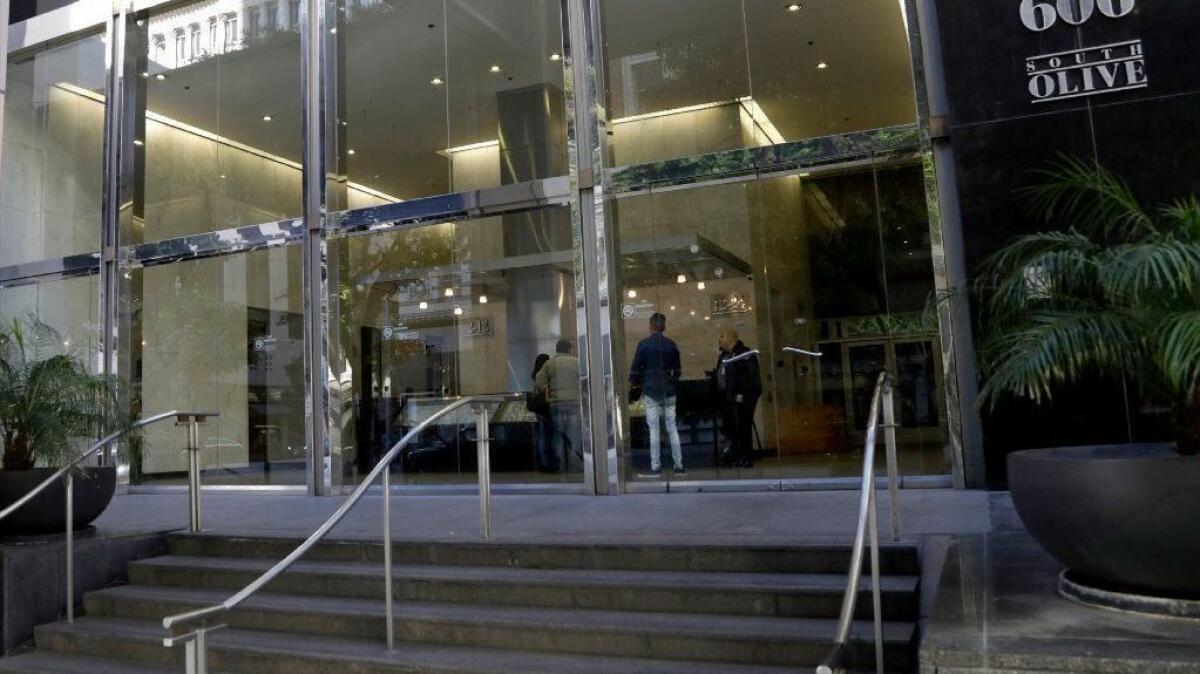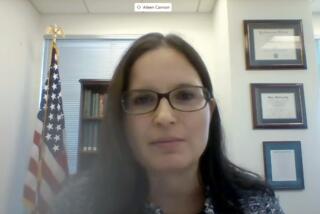Trump plan fails to cut immigration court backlog, as caseload soars more than 26%

The Trump administration’s controversial plan to shrink the ballooning backlog of immigration cases by pushing judges to hear more cases has failed, according to the latest data, with the average wait for an immigration hearing now more than two years.
Since October 2017, when the Justice Department approved a plan aimed at reducing the backlog in immigration court, the pending caseload has grown by more than 26%, from 655,932 cases to just shy of 830,000, according to Syracuse University’s Transactional Access Records Clearinghouse, which tracks data from immigration courts.
Even that figure likely understates the backlog because it doesn’t include the impact of the 35-day government shutdown in December and January. Because the system’s roughly 400 immigration judges were furloughed during the shutdown, some 60,000 hearings were canceled. Thousands were rescheduled, adding to the already long wait times.
The administration “has not only failed to reduce the backlog, but has eroded the court’s ability to ensure due process” by pressuring judges to rule “at a breakneck pace” on whether an immigrant should be removed from the United States, the American Immigration Lawyers Assn. — a nonprofit organization of more than 15,000 immigration attorneys and law professors — said in a statement.
When the Justice Department’s Executive Office of Immigration Review, which administers immigration courts, released its plan, officials described it as a “comprehensive strategy for significantly reducing the caseload by 2020,” according to a partially redacted copy of an October 2017 memo obtained by the immigration lawyers group through a Freedom of Information Act request.
“The size of EOIR’s pending caseload will not reverse itself overnight,” the memo said, but by fully implementing the strategy, the office can “realistically expect not only a reversal of the growth of the caseload, but a significant reduction in it.”
Instead, the average wait has grown by a month from January alone, to 746 days — ironically extending the stay of thousands of migrants whom the administration might want to deport from the United States. The Justice Department declined to immediately comment on the growth of the backlog.
The number of pending immigration cases has risen dramatically in recent years, doubling from less than 300,000 in 2011 to 650,000 by December 2017, the end of Trump’s first year in office, according to the Justice Department.
The Trump administration has blamed the ballooning backlog on President Obama’s immigration policies, saying that “policy changes in recent years have slowed down the adjudication of existing cases and incentivized further illegal immigration that led to new cases.”
Administration officials have pointed to Obama’s effort to focus deportation on immigrants with serious criminal records and protecting certain immigrants known as Dreamers who were brought to the U.S. as children as examples of policies that have provided incentives for illegal border crossings.
The administration’s plan to reverse the backlog included a number of controversial steps.
One move restricted the ability of immigration judges to schedule and set priorities for their cases under a process known as “administrative closure.” That change compelled judges to reopen thousands of cases that had been deemed low priority and had been closed. Within three months of the memo, Immigration and Customs Enforcement had moved to reschedule 8,000 cases, prompting concern from lawmakers, according to the immigration lawyers association. Potentially, as many as 350,000 cases ultimately could be added back onto the court dockets.
The administration’s plan also tied immigration judges’ individual performance reviews to the number of cases they complete, calling for them to finish 700 removal cases in the next year.
In contrast to regular courts, immigration judges are not independent; they’re part of the Justice Department. Because of that, the attorney general is both the chief prosecutor in immigration cases and the ultimate boss of the judges, who are classified as government attorneys.
The National Assn. of Immigration Judges, as well as the immigration lawyers association and other groups, have long called for Congress to end what they see as a built-in conflict of interest and create an immigration court separate from the Justice Department.
“As long as we continue to allow the court to be used as a law enforcement tool,” said Ashley Tabaddor, president of the National Assn. of Immigration Judges, “you’re going to get these kinds of backlogs and inefficiencies.”
Any speedup that may have resulted from the imposition of quotas on the judges has been overtaken by the administration’s stepped-up enforcement efforts, which have pushed thousands of new cases into the system.
Stepped-up enforcement without a corresponding increase in judicial resources provides the main reason the backlog has gone up so dramatically, said Stephen Legomsky, Homeland Security’s chief counsel for immigration from 2011 to 2013.
“Immediately upon taking office, President Trump essentially advised Border Patrol agents and ICE officers that they were to begin removal proceedings against anyone they encountered that they suspected of being undocumented, without sufficiently increasing resources for immigration judges,” Legomsky said.
Under previous administrations, “the thinking was, ‘Let’s not spend our limited resources on people who are about to get legal status,’” he said, “Taking that discretion away dramatically increased the caseload.”
Some officials warned that could happen when the effort to curtail the backlog began.
“Any burst of case initiation,” by Homeland Security “could seriously compromise” the Justice Department’s “ability to address its caseload and greatly exacerbate the current state of the backlog,” the acting director of the immigration review office wrote in the October memo to Deputy Atty. Gen. Rod Rosenstein.
The quota effort could also prevent attorneys from providing representation to immigrants, according to the Assn. of Pro Bono Counsel, which represents lawyers who handle cases free of charge for the poor.
Whether immigrants have legal representation makes a huge difference in the outcome of cases: Between October 2000 and November 2018, about 82% of people in immigration court without attorneys were either ordered deported or gave up on their cases and left the country voluntarily, while only 31% of those with lawyers were deported or left.
The administration has succeeded in speeding the hiring of new immigration judges by 74%. The number of immigration judges has grown from 338 when the plan was introduced to 414 by the end of 2018.
Lawmakers have raised concerns that some of those new hires have been politically motivated. In May, House Democrats requested an investigation by the Justice Department Inspector General’s office into allegations that candidates have been chosen or rejected for perceived ideological views.
“The current administration has taken advantage of the court’s structural flaws,” the immigration lawyers association wrote, “introducing numerous policies … that dramatically reshape federal immigration law and undermine due process in immigration court proceedings.”
Twitter: @mollymotoole
More to Read
Get the L.A. Times Politics newsletter
Deeply reported insights into legislation, politics and policy from Sacramento, Washington and beyond. In your inbox three times per week.
You may occasionally receive promotional content from the Los Angeles Times.







